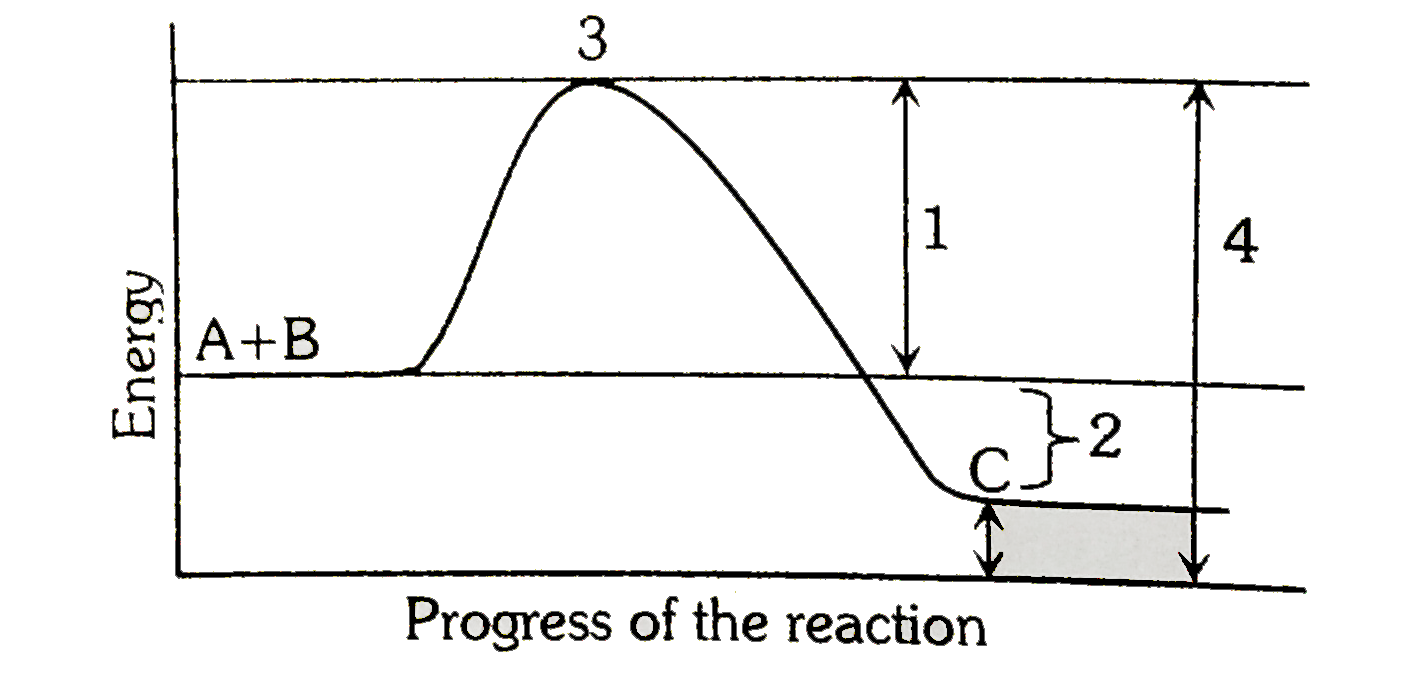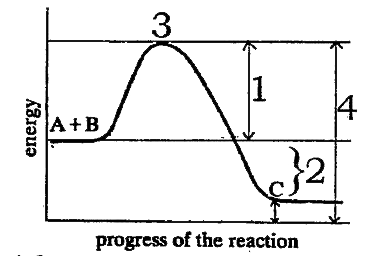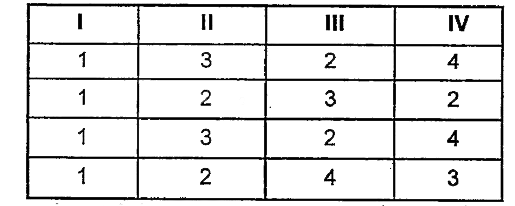Select all false statements for an enzyme promoting a chemical reaction by -
I. Lowering the energy of activation
II. Causing the release of heat, which acts as a primer
III. Increasing molecular motion
IV. Changing the free energy difference between substrate and product
I and IV
I and III
II, III, IV
III and IV
The correct Answer is:C
To determine the false statements regarding how enzymes promote chemical reactions, we will analyze each statement provided in the question:
Step 1: Analyze Statement I
- Statement I: Lowering the energy of activation.
- Analysis: This statement is true. Enzymes function by lowering the activation energy required for a reaction to occur, which increases the rate of the reaction.
Step 2: Analyze Statement II
- Statement II: Causing the release of heat, which acts as a primer.
- Analysis: This statement is false. Enzymes do not primarily promote reactions by releasing heat. Instead, they lower the activation energy. While some reactions may release heat, it is not a mechanism by which enzymes facilitate reactions.
Step 3: Analyze Statement III
- Statement III: Increasing molecular motion.
- Analysis: This statement is true. Enzymes can increase the rate of reaction by facilitating interactions between molecules, which can lead to increased molecular motion. However, the primary role of enzymes is to lower activation energy.
Step 4: Analyze Statement IV
- Statement IV: Changing the free energy difference between substrate and product.
- Analysis: This statement is false. Enzymes do not change the free energy difference between the substrate and product; they only affect the rate at which equilibrium is reached. The overall energy change (ΔG) remains the same.
Conclusion: Identify False Statements
- The false statements are:
- Statement II: Causing the release of heat, which acts as a primer.
- Statement IV: Changing the free energy difference between substrate and product.
Summary of False Statements:
- II and IV are false statements regarding how enzymes promote chemical reactions.
- Statement I: Lowering the energy of activation.
- Analysis: This statement is true. Enzymes function by lowering the activation energy required for a reaction to occur, which increases the rate of the reaction.
- Statement II: Causing the release of heat, which acts as a primer.
- Analysis: This statement is false. Enzymes do not primarily promote reactions by releasing heat. Instead, they lower the activation energy. While some reactions may release heat, it is not a mechanism by which enzymes facilitate reactions.
- Statement III: Increasing molecular motion.
- Analysis: This statement is true. Enzymes can increase the rate of reaction by facilitating interactions between molecules, which can lead to increased molecular motion. However, the primary role of enzymes is to lower activation energy.
- Statement IV: Changing the free energy difference between substrate and product.
- Analysis: This statement is false. Enzymes do not change the free energy difference between the substrate and product; they only affect the rate at which equilibrium is reached. The overall energy change (ΔG) remains the same.
- The false statements are:
- Statement II: Causing the release of heat, which acts as a primer.
- Statement IV: Changing the free energy difference between substrate and product.
- II and IV are false statements regarding how enzymes promote chemical reactions.
Similar Questions
See the following figure and identify 1, 2, 3 and 4 from the list I to IV

I. Segment representing the energy of activation
II. Segment representing the amount of free energy released by the reaction
III. Transition state
IV. Segment would be the same regardless of whether the reaction were uncatalysed or catalysed. Which one correct
∣∣ ∣ ∣ ∣ ∣ ∣∣IIIIIIIV(a)1243(b)1324(c)1232(d)1324∣∣ ∣ ∣ ∣ ∣ ∣∣
View Solution
I. Segment representing the energy of activation
II. Segment representing the amount of free energy released by the reaction
III. Transition state
IV. Segment would be the same regardless of whether the reaction were uncatalysed or catalysed
Which one is correct?
View Solution
Knowledge Check
Which of the following is the function of enzyme?
I.Enzymes hold the substrate for a chemical reaction
II.It increase energy of activation.
III.It provide functional groups and carry out chemical reaction
Choose the correct optionAI and II are trueBII and III are falseCI and III are trueDall are trueArrange the steps of catalytic action of an enzyme in order and select the correct option
I. The enzyme releases the products of the reaction and the enzyme is free to bind to another substrate
II. The active site of enzyme is in close proximity of the substrate and breaks the chemical bonds of the substrate
III. The binding of substrate induces the enzyme to alter its shape fitting more tightly around substrate.
VI. The substrate binds to the active site of the enzymeAIV,II,II,IBIII,II,I,IVCIV,II,I,IIDII,I,IV,IIIWhich one of the following statements about enzymes is true ?
1. Enzymes are proteins whose shape does not help in their functions.
2. Enzymes lower the reaction rate by lowering the activation energy
3. Enzymes do not show a high specificity during biological reactions.
4. Enzyme activity is affected by the change in temperature and pHAOnly 2BOnly 1COnly 3DOnly 4
Which of the following statements about enzymes are correct ?
(i) Enzymes do not alter the overall change in free energy for a reaction.
(ii) Enzymes are proteins whose three dimensional energy.
(iii) Enzymes speed up reactions by lowering activation energy.
(iv) Enzymes are highly specific for reactions.
(v) The energy input needed to start a chemical reaction is called activation energy.
View SolutionWhich of the following statements about enzymes is true?
I. Enzymes do not alter the overall change in free energy for a reaction
II. Enzymes are proteins whose three dimensional shape is key to their functions
III. Enzymes speed up reactions by lowering activation energy
IV. Enzyme are highly specific for reactions
V. An enzyme like any protein has the secondary and tertiary structure.
VI. The energy input needed to start a chemical reaction is called activation energy
View SolutionThe enzymes
I. are protein with catalytic activities.
II. Are colloidal in nature.
III. Working within the cell are called simple enzymes.
IV. Increase the activation energy of the reaction they catalyse.
View SolutionAmong the statement given below, which statements /s is / are correct regarding the relationship between enzyme and substrate ?
I. Above a certain concentration of substrate , an enzyme reaches its maximum rate of reaction
II. Increasing the substrate concentration to a higher level doesn't reverse the effects of a competitive inhibitor.
III At high substrate concentration , a non competitive inhibitor no longer affects the enzyme activity .
IV. The higher the concentration of substrate the faster an enzyme can cataylse a reaction.
View SolutionWhich of the following options correctly represent trure//false nature of statements?
Statement-I: δH=δU+PδVfor all processes
Statements-II: For a reaction involving only ideakl gas, ΔHreaction will be independent of the pressure at which reactants and products are taken.
Statements-III: Heat taken from a thermal reservoir can be completely converted at work without liberating some heat at lower temperature.
Statement-IV: For a chemical reaction, G at equillibrium will be zero.
View Solution